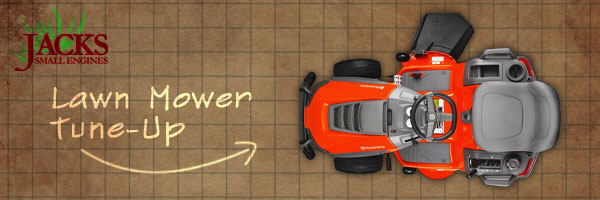Lawn tractors are among the most repair-prone products we test, according to our annual surveys. At several hundred pounds, they're also a handful to transport to the repair shop, where you'll typically pay $50 to $75 per hour once you get an appointment. While new-tractor prices have dropped in recent years, you'll still pay $1,500 or more for most competent models (See our lawn tractor Ratings and recommendations.)
Some simple at-home upkeep can help you avoid those expenses and the time and hassle of getting a broken tractor to a shop. Much of that maintenance involves the gas engine that runs all lawn tractors. Here's what to do and when to do it:
When the mowing season begins:
When the mowing season begins:
- Unless the battery is maintenance-free, check its electrolyte level and top off each cell with distilled water as needed. Some batteries are mounted beneath the seat, some under the hood.
- Tighten the two cables if they're loose on their terminals--a common no-start culprit.
- Recharge the battery if needed. Use a portable charger or power pack.
- Check connections to other electrical parts, such as lights, gauges, and the ignition key, and tighten or clean as needed.
- Hose off or scrape old clippings from beneath the mowing deck. (Hint: Drive the front of the tractor onto car ramps for access if the deck lacks a garden-hose connection.) Caked-on clippings compromise mulching and bagging by upsetting airflow beneath. When using a hose, avoid getting the engine and transmission wet.
- Have blades sharpened if you didn't do it before winter storage. Blades should be sharpened at least once each mowing season.
- Be sure tires are properly inflated. Most require 10 to 14 pounds per square inch (psi); check the owner's manual.

- Check that the oil-dipstick level is at or near the full mark. Add more if needed, but don't overfill. Too little oil can damage or destroy the engine by leaving parts unlubricated; too much can also underlubricate by causing air bubbles.
- Check tires visually before each use.
- Hose or scrape old clippings from beneath the mowing deck.
- Regularly check belts/chain drives for wear and tightness.
- Have blades sharpened.
- Replace spark plugs.
- Replace the carburetor air filter if it's paper. Wash foam filters in soap and water, rinse and squeeze dry, then oil with engine oil and squeeze dry again before reinstalling.
- Replace the fuel filter. You'll find it on the hose leading to the carburetor.
- Replace old engine oil and dispose of it properly at a collection center.
- Add stabilizer to the fuel tank at the end of the mowing season. Let the engine run until fuel runs out.
- Remove and keep the battery charged with a trickle charger during long storage.






